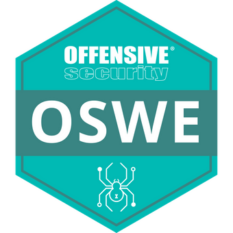Benefits of Secure Code Review
Secure Code Review (SCR) and Static Application Security Testing (SAST) are essential security touchpoints in any software development lifecycle (SDLC) as an effort to identify and remediate vulnerabilities.
Use of Recognized Frameworks
Automated & Manual Reviews
Advanced Threat Modeling
Top 10 Web Application Security Risks
Broken Access Control
Sensitive Data Exposure
Broken authentification and Session management
Injection flows

Security Misconfiguration
Insecure Deserialization
Using Components with Known Vulnerabilities
Insufficient Logging & Monitoring
Static Application Security Testing (SAST)
Going beyond automated testing
Frequently asked questions about Secure Code Review
What is a Secure Code Review?
A secure source code review is a process of identifying and patching coding errors in the development phase before they turn into a high-level security risk. It helps in identifying hidden vulnerabilities, design flaws, insecure coding practices, backdoors, injection flaws, weak cryptography.
What is the importance of Secure Code Review?
The importance of secure code review is to identify and locate security-related vulnerabilities and flaws within the source code. These flaws can be malicious and might make the whole code hostile for exploitation. If the source code of applications is not secure, then it might compromise the integrity, security, confidentiality, and attainability of the applications.
What is the advantage of Secure Code Review?
A secure code review should be integrated into the development life cycle at an early stage, which reduces the time it takes for developers to remediate security bugs.
- Detect vulnerabilities early while still easy and cheap to fix.
- Make sure that your code satisfies industry regulations and compliance standards.
- Identify if the source code is inadvertently revealing any sensitive business data.
- Get a deeper view of any security issues in your code and security exposure points.
What is a Secure Software Development Life Cycle (SDLC)?
The concept of secure SDLC implies programming and development practices to enhance security in the Software Development Life Cycle. The notion of security is implied at each phase of SDLC which requires engineers from the development team to focus on the element of security. This provides additional focus on the structure of the application before its deployment.



